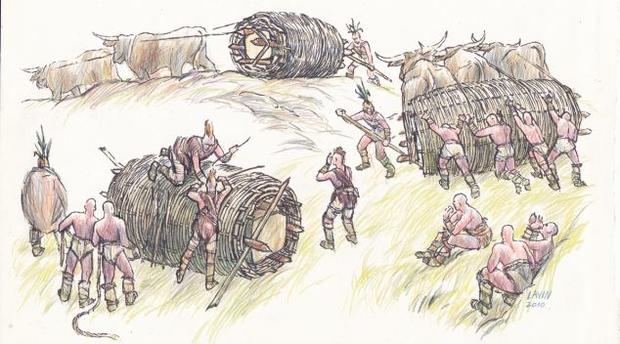Stonehenge Builders Said to Use Giant Wicker Baskets to Roll Massive Stones
Rolling a 4-ton stone some 200 miles from a Welsh quarry to the site that the world now knows as Stonehenge would have been a daunting enough challenge for even the hardiest of Neolithic-era laborers. There have been any number of explanations offered - the most recent coming last week when a University of Exeter archeology student suggested that wooden ball bearings balls placed in grooved wooden tracks would have facilitated the movement of the massive stone slabs.
"I always thought that dragging these huge stones was physically impossible because of the friction on the surface," Lavin told the Daily Mail. "The key thing is the technology was always there around them....Woven structures were everywhere at the time, there are even wells which they have discovered were full with woven basketwork. It's just taking that technology and using it in a new way. It is not without some foundation. It was staring us in the face the whole time."
Over the summer, Lavin put his theory to the test and he said he successfully moved a one-ton stone in a wicker cage he constructed. Next one his list: Build a larger wicker cradle and try to transport a five-tone slab. He expects to be ready for that test just around summer solstice time next year.
Just in time to celebrate - if all goes well - at Stonehenge.